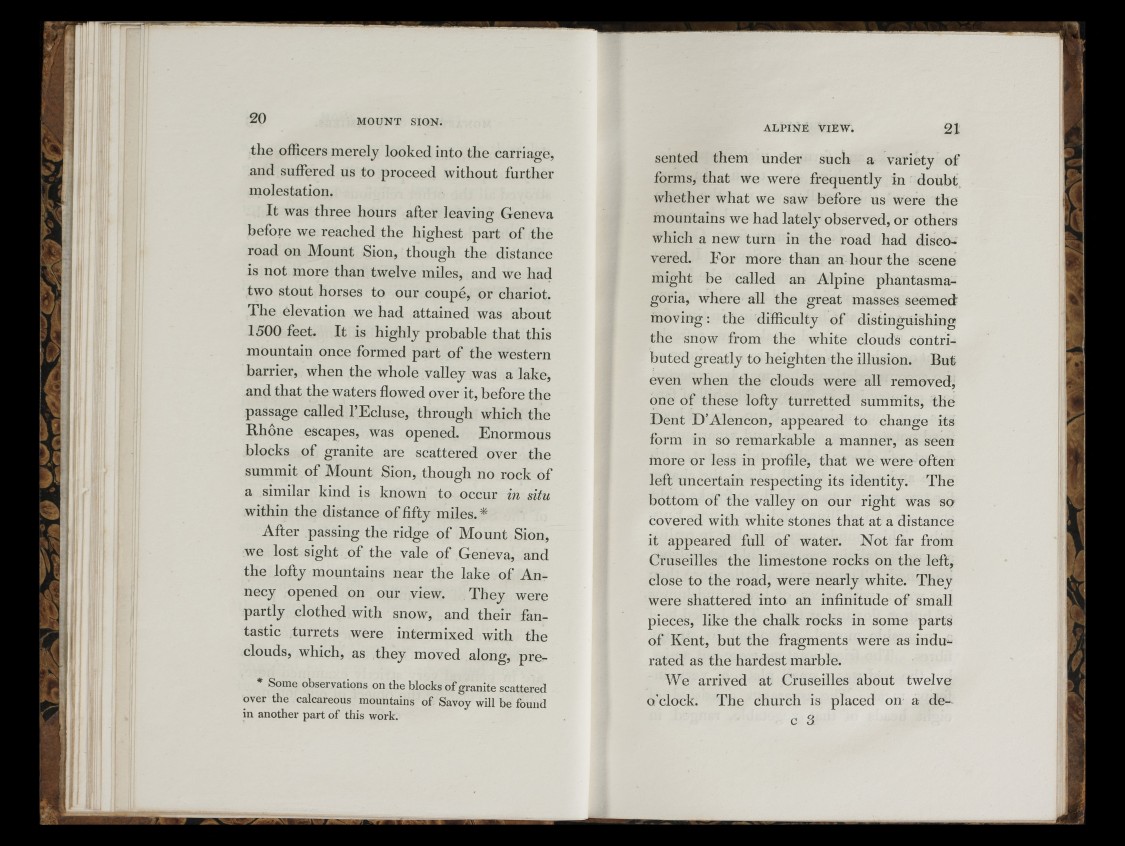
i
■ -Ì
20 MOUNT SION. ALPINE VIEW. 21
the officers merely looked into the carriage,
and suffered us to proceed without further
molestation.
It was three hours after leaving Geneva
before we reached the highest part of the
road on Mount Sion, though the distance
is not more than twelve miles, and we had
two stout horses to our coupé, or chariot.
The elevation we had attained was about
1500 feet. It is highly probable that this
mountain once formed part of the western
barrier, when the whole valley was a lake,
and that the waters flowed over it, before the
passage called I’Ecluse, through which the
Rhone escapes, was opened. Enormous
blocks of granite are scattered over the
summit of Mount Sion, though no rock of
a similar kind is known to occur in situ
within the distance of fifty miles. *
After passing the ridge of Mount Sion,
we lost sight of the vale of Geneva, and
the lofty mountains near the lake of Annecy
opened on our view. They were
partly clothed with snow, and their fantastic
turrets were intermixed with the
clouds, which, as they moved along, pre*
Some observations on the blocks of granite scattered
over the calcareous mountains of Savoy will be found
in another part of this work.
sented them under such a variety of
forms, that we were frequently in doubt
whether what we saw before us were the
mountains we had lately observed, or others
which a new turn in the road had discovered.
For more than an hour the scene
might be called an Alpine phantasmagoria,
where all the great masses seemed
moving: the difficulty of distinguishing
the snow from the white clouds contributed
greatly to heighten the illusion. But
even when the clouds were all removed,
one of these lofty turretted summits, the
Dent D’Alencon, appeared to change its
form in so remarkable a manner, as seen
more or less in profile, that we were often
left uncertain respecting its identity. The
bottom of the valley on our right was so
covered with white stones that at a distance
it appeared full of water. Not far from
Cruseilles the limestone rocks on the left,
close to the road, were nearly white. They
were shattered into an infinitude of small
pieces, like the chalk rocks in some parts
of Kent, but the fragments were as indu^
rated as the hardest marble.
We arrived at Cruseilles about twelve
o’clock. The church is placed on a dec
3 .a